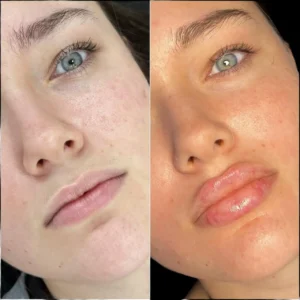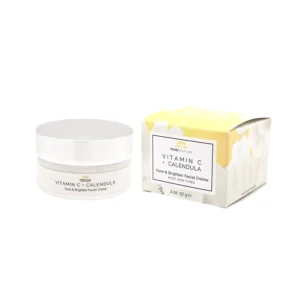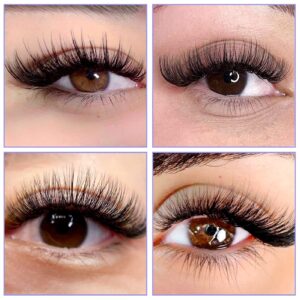
Honey has long held a place in our kitchens and medicine cabinets, an ancient remedy, a natural sweetener, and a symbol of pure indulgence. But not all honey is created equal. If you’ve ever stood in front of a shelf full of golden jars, wondering which one to take home, you’re not alone. From deep, dark buckwheat to delicate orange blossom, each variety of honey brings a unique taste, texture, and benefit to the table. But beyond flavor, choosing the perfect honey for you involves understanding its origin, processing, and purpose. What suits your morning toast might not be ideal for your skincare routine or immune boost. Decoding labels and terms like Raw Honey or “wildflower” can make all the difference.
So how do you find the honey that checks all your boxes like taste, health, and quality? It all starts with knowing what you’re looking for.
The Different Types of Honey
Before you can decide which honey is right for your lifestyle, it’s essential to get familiar with the types available. The variety you choose can impact both your health benefits and flavor preferences.
Raw vs. Processed Honey
Raw honey is as close to nature as you can get. It’s unfiltered and unpasteurized and retains all the natural enzymes, antioxidants, and nutrients that processed honey often loses during high-heat treatment.
- Nutrient Retention: It contains bee pollen, propolis, and natural enzymes that support immunity and digestion.
- Taste Profile: Often richer and more complex, this honey varies based on flower sources and region.
- Shelf Stability: Unlike processed versions, this honey may crystallize faster, but this is a sign of purity, not spoilage.
Processed honey, on the other hand, is often heated and filtered to create a uniform, shelf-stable product. While convenient, it loses many of its beneficial compounds during processing.
Want all the natural goodness in your spoonful? Raw Honey is often the best choice for maximum nutritional value.
Floral Source Matters More Than You Think
The flowers that bees collect nectar from dramatically shape the honey’s flavor and aroma. These are some popular floral sources and their unique characteristics:
| Type of Honey | Flavor Profile | Best Uses |
| Clover | Mild, sweet | Every day sweetener, tea |
| Buckwheat | Rich, molasses-like | Baking, sore throat relief |
| Orange Blossom | Floral, citrusy | Drizzle on fruits and yogurt |
| Wildflower | Complex, varies by season | Immune support, smoothies |
| Manuka | Earthy, medicinal | Skincare, immunity |
Choosing Based on Flavor Preference
- For a sweet tooth: Clover and orange blossom are light and easy to enjoy.
- For bold palates: Buckwheat and manuka offer deep, intense flavors.
- For variety seekers: Wildflower honey offers a surprise in every jar, depending on the season.
What Honey is Best for You?
Now that you’re familiar with types and flavors, it’s time to answer the big question: What honey is best for you? It depends on your lifestyle, health goals, and taste preferences.
For Daily Wellness
If you’re looking for something to add to your morning routine or help support immunity:
- Choose raw wildflower or manuka honey.
- Look for darker honeys with high antioxidant content.
- Stick to small-batch, local varieties when possible.
For Skincare and Topical Use
Honey has antibacterial and anti-inflammatory properties, making it ideal for skin:
- Manuka honey is the gold standard for wounds, acne, and hydration.
- Raw forms are more effective than pasteurized types in retaining healing properties.
For Cooking and Baking
Need a healthier sugar substitute?
- Lighter honeys like acacia or clover are great for sweetening without overpowering flavors.
- Buckwheat honey adds richness to baked goods and sauces.
How to Read Honey Labels Like a Pro
Navigating honey labels can be overwhelming, but a few key phrases can help you make a smarter choice.
What to Look For
- Raw: Indicates minimal processing and more nutrients.
- Unfiltered: Suggests the honey still contains beneficial bee particles like pollen.
- Single-origin: All honey comes from the same region or floral source, ensuring consistency.
- Organic: Bees forage on pesticide-free plants, and hives are treated without chemicals.
Avoid honey labeled with “honey blend” or “honey syrup” these usually contain added sugars or corn syrup.
How Climate and Region Affect Honey Quality
The region where bees forage plays a big role in the quality and taste of honey. Climate, season, and soil all influence nectar composition. For example:
- Honey from dry climates often has a more concentrated, intense flavor.
- Spring honey tends to be lighter and milder compared to fall harvests, which are richer and darker.
- Tropical regions may yield fruity notes, while mountain honey can be more herbal or woody.
Understanding the terroir of your honey can deepen your appreciation and guide better choices.
Storing Your Honey Properly
Proper storage ensures your honey stays delicious and beneficial:
- Keep it in a tightly sealed glass jar.
- Store at room temperature away from sunlight.
- Crystallized honey? Just place the jar in warm water and stir gently, but don’t microwave.
Bottom Line
Finding the perfect honey for you means understanding your needs, whether it’s a boost to your morning tea, a natural skincare hero, or a delicious alternative to sugar. Always read the labels, explore different floral sources, and choose Raw Honey when you want to keep things as natural as possible. With a little knowledge, your next jar of honey will be sweet, smart, healing, and exactly what your body (and taste buds) have been asking for.
Smiley Honey brings you some of the finest honey from carefully selected floral sources, harvested with love and integrity. Our commitment to quality ensures every jar is rich in flavor and packed with the goodness nature intended. If you’re new to honey or a long-time fan, Smiley Honey has a delicious match waiting for you.




